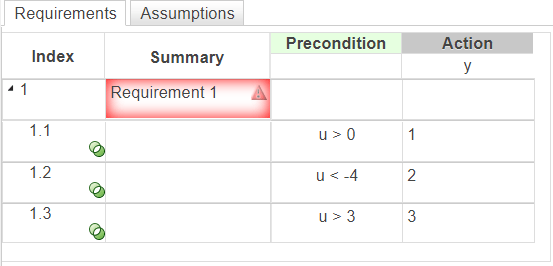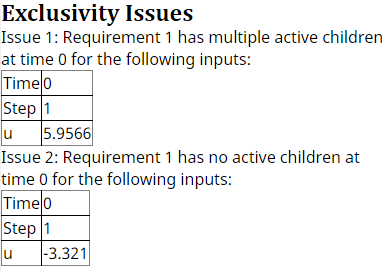检测 Requirements Table 模块中的排他性问题
自 R2023b 起
您可以使用互斥穷举需求来创建不重叠且完整的子需求。当您创建互斥穷举子需求时,您必须避免排他性问题,此类问题在多个或没有互斥穷举需求处于活动时发生。如果您有 Simulink® Design Verifier™,您可以在仿真之前分析表格以检测这些排他性问题。有关互斥穷举需求的更多信息,请参阅 创建互斥穷举需求。
要分析该模块,请在表中点击分析表。当互斥穷举需求存在排他性问题时,表格会以红色突出显示父需求,并显示警告图标 ![]() 。在该图中,父需求具有互斥穷举子需求。该表存在两个排他性问题。
。在该图中,父需求具有互斥穷举子需求。该表存在两个排他性问题。

分析结果窗格显示有关排他性问题的其他信息。您可以通过修改需求来解决排他性问题,以便每个时间步骤中只有一个排他性详尽需求处于活动状态。为了解决该表中的第一个问题,请修改现有需求以消除 u 大于 3 时的重叠。为了解决第二个问题,引入定义 u 何时大于或等于 -4 且小于或等于 0 的需求。
